Rainbows, Sunshine and Superheroes
“Evie, come look! I’m a superhero! I have superpowers!” calls Jamie from the foyer.
Curiosity piqued, Evie leaves her blocks behind to see what her best friend is up to now.

“Rainbows!!!” Evie shrieks as she spies the colorful light pattern on Jamie’s wrist.
Everyone within earshot dashes over to see the rainbows. And, just like that, our morning activities morph into a joyous exploration of light and color.
Squeals are the soundtrack for this sudden spasm of joy as the children dance around the room “catching” rainbows.
The rainbows that have inspired this impromptu STEM investigation are coming from the leaded-glass windows on our old schoolhouse.
During the winter and early spring, the sun hits these windows at just the right angle and we find these refracted-light rainbows on our walls, the floor—and even on the faces of napping children.
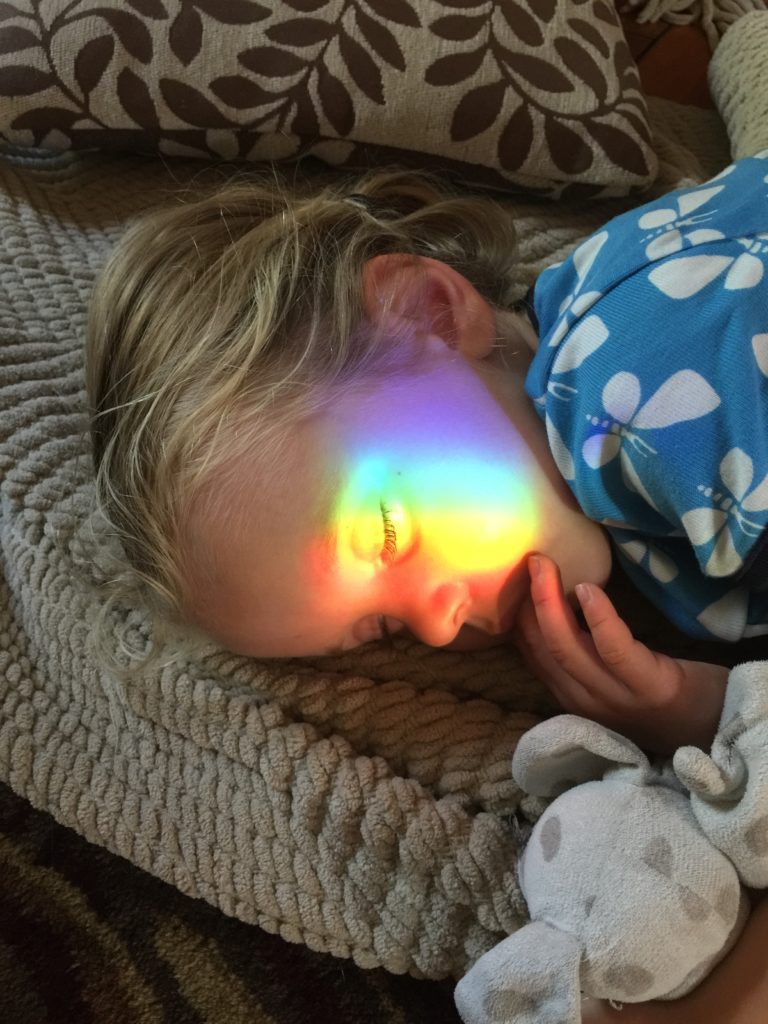
“I know the colors of the rainbow!” Noah sings. “R is for Red, O is for Orange, Y is for Yellow…”
A chorus of little voices joins in, along with requests for our favorite “ROY G. BIV” song from the children’s CD, Here Comes Science (see image below).
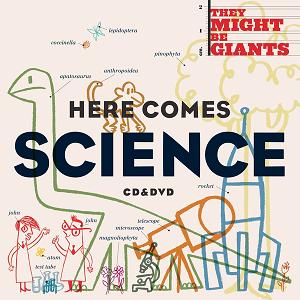
The song is used as a mnemonic aid to help children remember the colors of the visible light spectrum in order of increasing frequency: Red, Orange, Yellow, Green, Blue, Indigo and Violet.
Color recognition marks an important developmental milestone.
Color identification helps children strengthen the cognitive link between visual clues and words.
Noah is singing the ROY G. BIV song while pointing to each color. As I watch, I make a mental note to check off color recognition, vocabulary and sequential ordering on Noah’s upcoming learning assessment.
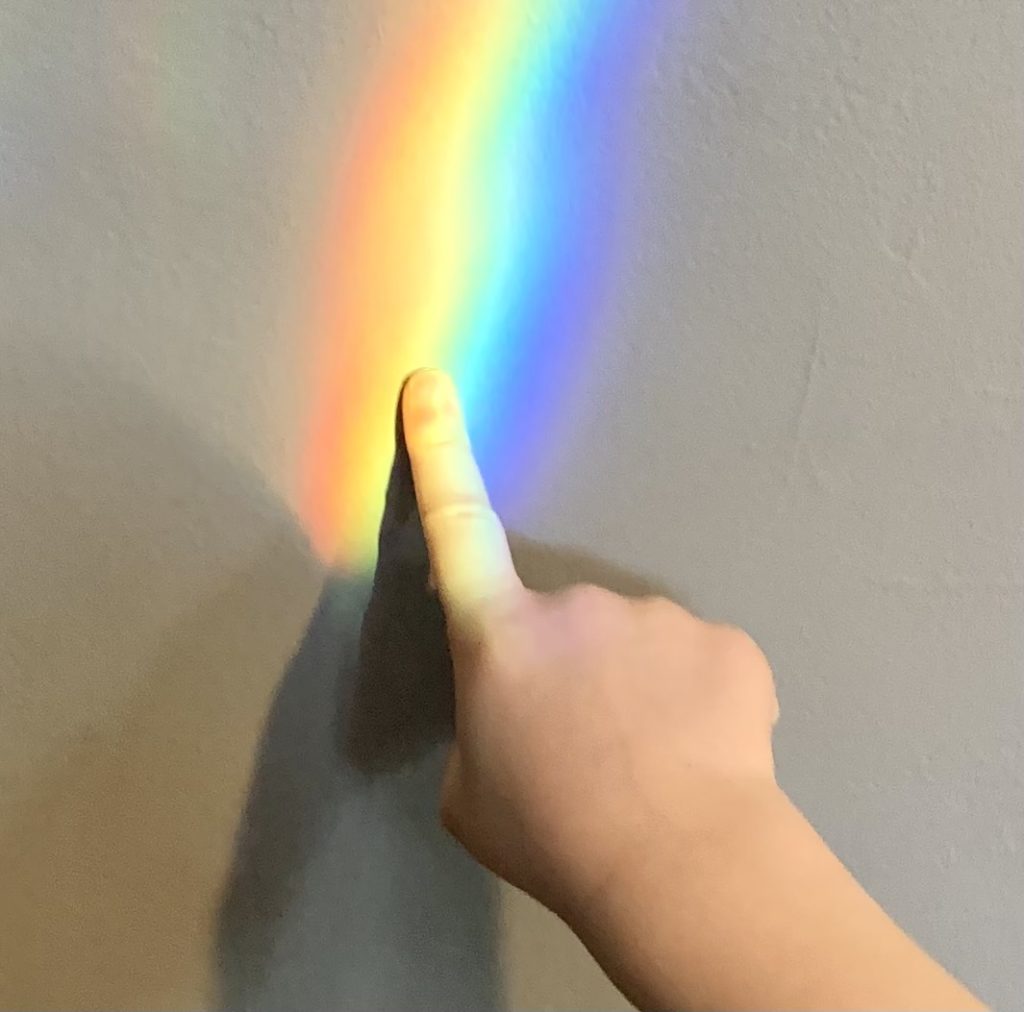
I attempt to explain that the rainbows in our classroom are created when the sunlight gets “split up” as it passes through a cut-glass window that bends the light.
“Red tends to bend the least, so it appears on the top of the rainbow, while violet bends the most and ends up on the bottom,” I state.
My jabbering is met with silence. The children are deep into their own investigations.
“The librarian told us that rainbows are actually circles, but they look like arches when we look at them from the ground,” says Owen.
Heads pop up. Owen’s comment is met with quizzical expressions as the children try to process this information.
“If we dig down into the ground would we see the rest of the rainbow?” Roberto asks.
“I don’t know,” shrugs Owen, glancing around at the rainbows in the room.

“What’s an arch?” asks Thali.
“You know, that part of the circle that looks like this,” says Jamie as he creates a half-circle with his hands. “It’s like you cut a circle in half!”
Thali nods and the focus of the group returns to the rainbows in the room.
This interaction prompts us to bring out our prisms and inject a bit of STEM into our hands-on play. Throughout the day, we experiment with other materials and sources of light.
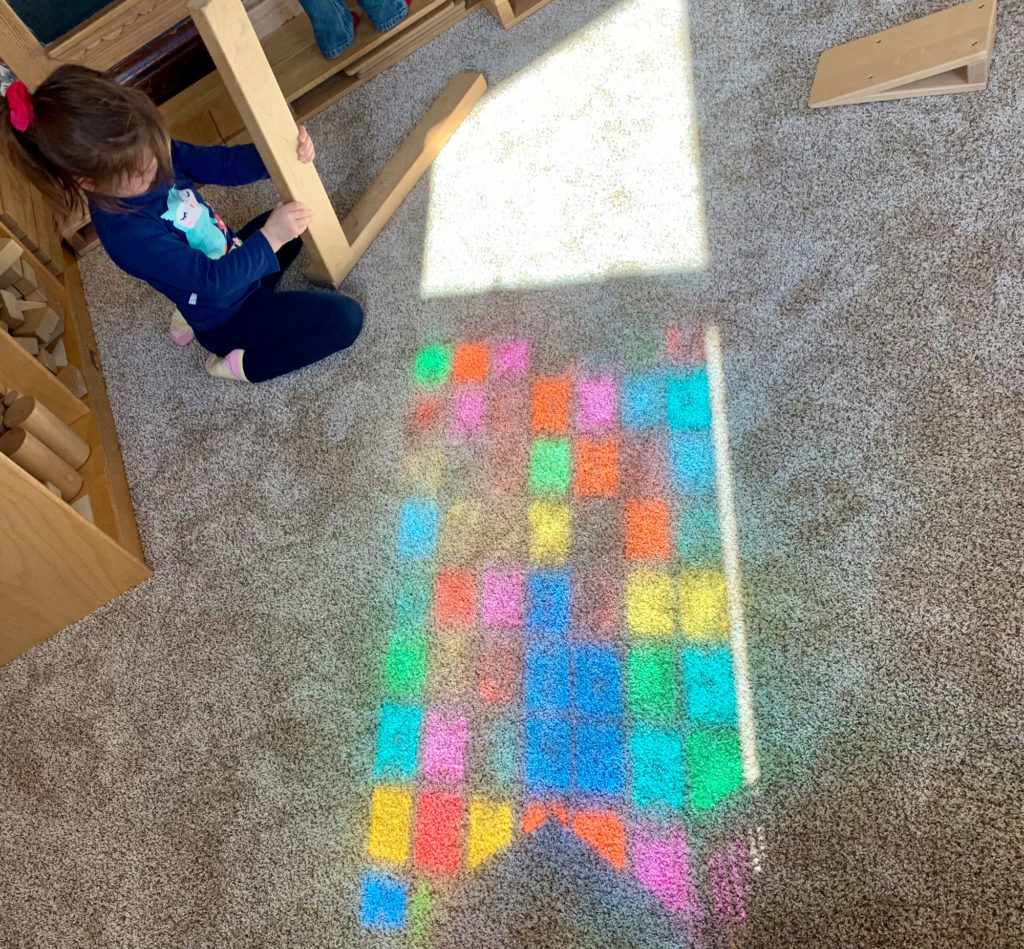
First, we add Magnatiles to the windows in our block area (above).
Then we grab our liquid tiles (below) and place them in the window frame. We love these tiles and play with them often, but this is the first time we’ve tried to place them in the window. The colorful liquid in the tile is reacting to the pressure of Sally’s fingers, stimulating her sensory, perceptual and spatial pathways.

I offer a large liquid floor tile to our younger learners. Some of the older children immediately join in the exploration, adding enough weight and pressure to move the liquid and stimulate the senses of our younger friends.

If you don’t have cut-glass windows, a simple window film can bring about the same results. We added this film to the window below, and we are greeted with rainbows whenever the sun shines!

When these spontaneous moments of learning land in our classroom, my goal is not for the children to completely comprehend or master a topic.
My goal is to learn with them, to pique their curiosity with investigative opportunities and to allow them to engage in scientific inquiry while playing with light.
The act of playing with light, reflection and color invariably evokes a sense of wonder.
So seize the moment for some impromptu STEM play when a rainbow spontaneously appears—and expand the options for color and light exploration with a few new prisms and props!
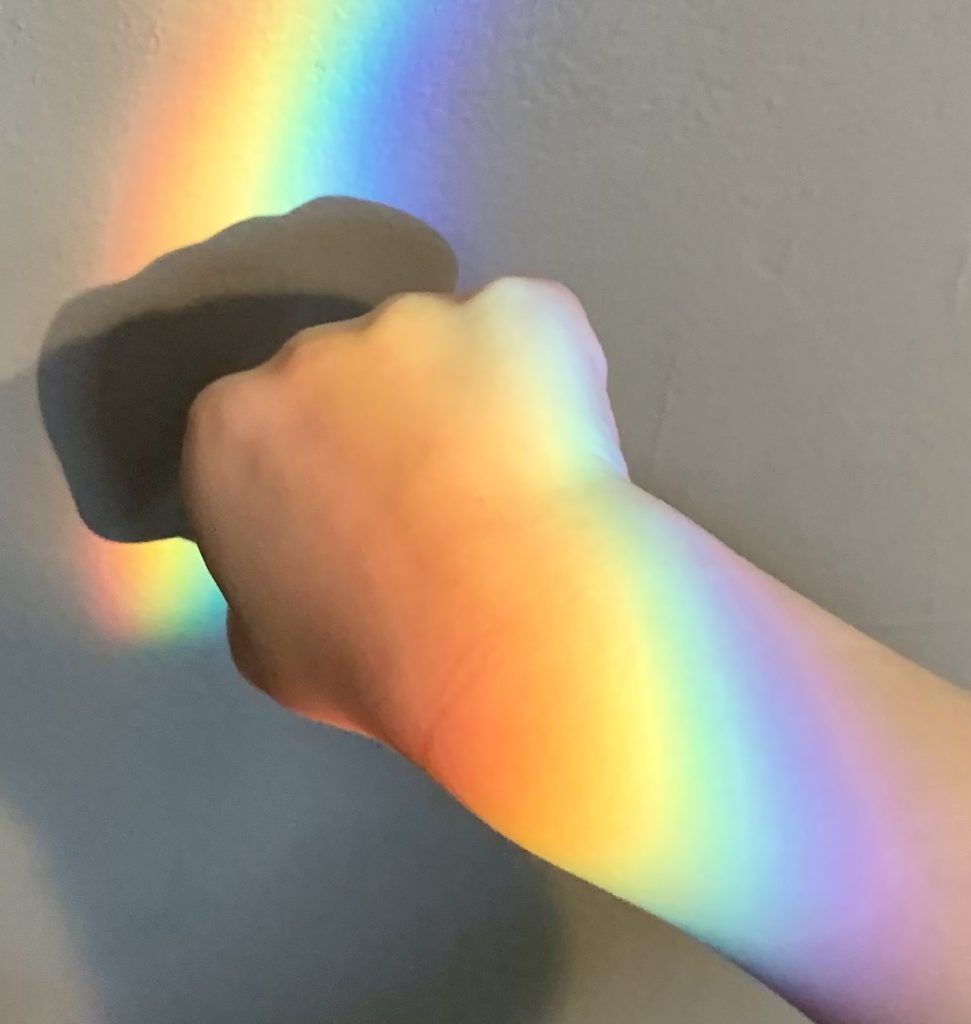
I have always brought a glass jar and put water in it for the refraction of light.
That an awesome idea and kids would love the refraction on the jar because they will see the rainbow.
I loved reading about the natural excitement of the children as they explored rainbows – the pattern of the color, recreating it with different materials, singing songs about rainbows. These are the learning experiences that keep children motivated and engaged.
I love rainbows! My classroom is full of them. The best ones are the drawings on my artist wall where everyone can see their work. We don’t have any windows in my room so we spend a whole week in the spring learning about them from their color pattern to what is necessary for them to form in nature, to some ways to create them ourselves.
P.S. The picture of the sleeping child with the rainbow on her face was precious!
Working with coloring rainbows is always a learning experience! We use Dauber Art to make them quite often!
Awesome post. I love how interested they were with the rainbows